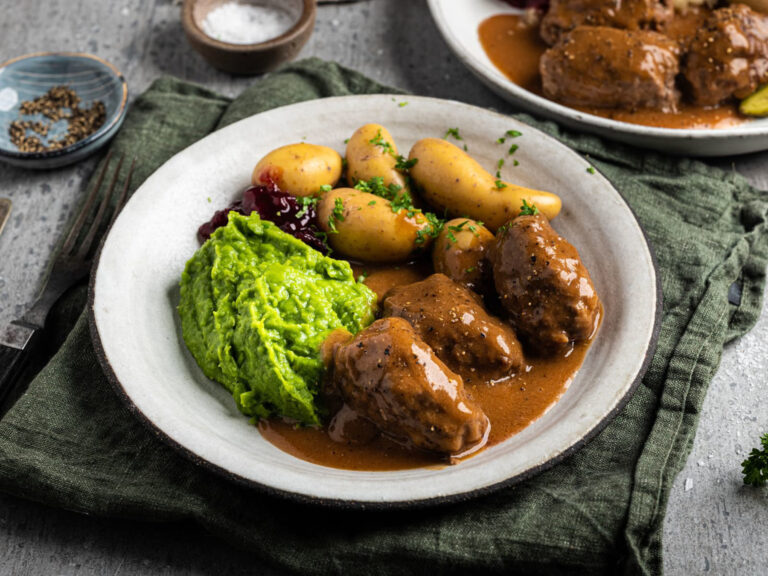Introduction: Norwegian cuisine and dietary restrictions
Norwegian cuisine is a delicious blend of traditional and modern dishes that are heavily influenced by the country’s geography and history. From hearty stews to fresh seafood, these dishes are loved by locals and tourists alike. However, for those with dietary restrictions, finding suitable options can be a challenge. Whether you are gluten-free, dairy-free, vegetarian, or vegan, there are plenty of Norwegian dishes that cater to your dietary needs.
Gluten-free Norwegian dishes: traditional options
Norwegian cuisine is rich in grains such as barley, rye, and wheat, which may present challenges for those with gluten intolerance. However, there are still plenty of gluten-free options available. Traditional dishes such as fish soup, Norwegian meatballs (kjøttkaker), and gravlax can easily be made gluten-free by using alternative flours such as rice flour or potato flour. Additionally, traditional Norwegian flatbreads called lefse can be made gluten-free by using alternative grains such as buckwheat or cornmeal.
Dairy-free Norwegian dishes: alternatives and adaptations
Dairy is a common ingredient in Norwegian cuisine, from creamy sauces to rich cheeses. For those with dairy intolerance, there are many adaptations and alternatives available. A popular dairy-free alternative to traditional Norwegian cheese is vegan cheese made from nuts or soy. Dishes such as fish stew (fiskesuppe) and boiled cod (klippfisk) can easily be made dairy-free by substituting coconut milk or almond milk for cream. Additionally, traditional Norwegian porridge (grøt) can be made dairy-free by using alternative milks such as oat milk or soy milk.
Vegetarian and vegan Norwegian dishes: options available
Norwegian cuisine is typically meat-heavy, with dishes such as lamb stew (fårikål) and reindeer meat (reinsdyrkjøtt) being popular options. However, there are plenty of vegetarian and vegan options available as well. Traditional dishes such as pea soup (ertesuppe) and potato dumplings (raspeballer) can easily be made vegetarian by using vegetable broth instead of meat broth. Additionally, Norwegian flatbreads called knekkebrød can be topped with a variety of vegan-friendly toppings such as avocado, hummus, or roasted vegetables.
Norwegian seafood dishes: safe for those with allergies
Seafood is a staple of Norwegian cuisine, with dishes such as fish soup (fiskesuppe) and pickled herring (sild) being popular options. For those with seafood allergies, it is important to exercise caution. However, Norwegian seafood is generally safe for those with allergies as it is often sustainably sourced and prepared with minimal ingredients. It is always best to check with the restaurant or chef before ordering, but seafood dishes such as boiled cod (klippfisk) and salmon (laks) are typically safe for those with allergies.
Conclusion: exploring Norwegian cuisine without restrictions
Norwegian cuisine is a diverse and delicious blend of traditional and modern dishes. While it may present challenges for those with dietary restrictions, there are plenty of options available. From gluten-free fish soup to vegan potato dumplings, there is something for everyone to enjoy. By exploring traditional Norwegian dishes and adapting them to your dietary needs, you can experience all the flavors and culture of Norway without restrictions.

